|
Hari ini terjadi sebuah peristiwa penting terkait masa depan Palestina: AS mengumumkan bahwa mereka tidak lagi memandang pendudukan Israel atas Tepi Barat sebagai tindakan ilegal. Bicara soal Israel, ini adalah negara dengan penduduk hanya 10 juta yang siap dicaplok oleh negara-negara Arab di sekelilingnya yang berpenduduk ratusan juta orang. Meski demikian, lobi Israel di AS luar biasa kuat. Salah satu organisasi lobi pro-Israel terkuat di AS adalah AIPAC. Hanya dari iuran anggota saja, AIPAC dapat mengumpulkan US$ 90 juta dalam setahun. Pada pemilu tahun lalu, AIPAC dan organisasi-organisasi pro-Israel menggelontorkan US$ 14 juta untuk menyokong para caleg AS untuk menjamin bahwa mereka akan membela kepentingan Israel di legislasi AS. Dari 435 anggota House of Representatives AS, 269 anggota menerima suntikan dana dari organisasi-organisasi lobi pro-Israel sebesar rata-rata US$ 23.000 per anggota dan dari 100 anggota Senat AS, 58 anggota menerima sokongan dana dari organisasi-organisasi tersebut sebesar rata-rata US$ 77.124 per anggota. Masih bingung kenapa politik luar negeri AS sangat pro-Israel? Dalam sejarahnya, tingkat konflik orang Yahudi dan orang Barat sebetulnya sangat tinggi. Tapi dengan kekuatan keuangan Zionis saat ini, mereka mampu merubah lawan menjadi kawan yang akan membela kepentingan mereka.
0 Comments
Persatuan Indonesia itu mahal sekali harganya. Kenapa? Karena sebenarnya sepanjang sejarah Nusantara, adalah tidak lazim untuk punya wilayah seluas wilayah Indonesia saat ini. Seringnya, Indonesia itu terdiri dari kerajaan-kerajaan yang didirikan atas kesamaan suku. Misalnya Jawa, Sunda, dll. Ini yang terjadi di zaman Hindu-Buddha ataupun Islam. Sepanjang sejarah Nusantara, seluruh Nusantara itu hanya dipersatukan pada masa pemerintahan dua kerajaan. Pertama, yaitu pada abad ke-8 ketika Samaratungga, raja Mataram Kuno (kerajaan yang mendirikan Prambanan & Borobudur) menikah dengan dewi Tara, putri raja Sriwijaya. Ketika dua dinasti ini melebur jadi satu, wilayah pengaruh Indonesia di Barat sampai ke Madagaskar (sebagian nenek moyang orang Madagaskar berasal dari suku Barito di Kalimantan yang dibawa kesana oleh kapal-kapal dagang Sriwijaya. Baca penelitian Peter Bellwood et al.), di utara sampai ke Kamboja (baca pasasti Sdok Kok Thom di Kamboja yang menerangkan bahwa Kamboja pernah dijajah Jawa pada abad ke-8 dan putra mahkotanya ditawan di Jawa), Cina Selatan (lihat catatan dinasti Tang pada 767 M mengenai serbuan-serbuan orang Jawa ke teluk Tonkin) dan di timur sampai ke Filipina Selatan (baca prasasti plat tembaga Laguna dari 900 M di Manila Selatan yang menerangkan tentang pembebasan utang penguasa setempat ke penguasa lain yang wilayahnya ada di bawah kekuasaan Jawa). Kedua, yaitu pada abad ke-14 ketika Majapahit berkuasa. Patihnya Majapahit, yaitu Gajah Mada, berambisi mempersatukan seluruh Nusantara. Ini dilakukannya melalui penaklukan-penaklukan militer dan juga diplomasi ke kerajaan-kerajaan di seluruh Nusantara. Daftar daerah yang dipersatukannya, mulai dari Sumatera sampai Maluku, bisa dibaca di kakawin kuno Negarakretagama. Belum pernah ada catatannya dalam sejarah Nusantara, di mana Nusantara berhasil diduduki bangsa asing kecuali ketika masa Jepang dan Belanda. Sebagai contoh, ketika Kubilai Khan mencoba menyebrang ke Nusantara untuk menguasai Nusantara pada abad ke-13, serangan ini berhasil dipatahkan dengan siasat yang dilakukan Raden Wijaya, pendiri Majapahit. Tapi coba perhatikan, bila mana Indonesia berhasil dikuasai kekuatan asing dan dipecah belah? Pada masa Jepang dan Belanda, Nusantara berhasil dikuasai karena anak-anak negeri sendiri berhasil diadu domba oleh Belanda. Lalu kenapa aliansi Sriwijaya dan Mataram Kuno akhirnya pecah? Yaitu ketika pangeran Rakai Pikatan dan Balaputradewa saling berebut tahta. Dan bagaimana kerajaan Majapahit hancur? Awalnya ketika pangeran Wikramawarddhana dari keraton Barat berebut kekuasaan dengan pangeran Bhre Wirabhumi dari keraton Timur. Jadi kalau dilihat, polanya selalu sama: Indonesia tidak pernah bisa dikuasai kekuatan asing dari luar ketika putra-putra bangsanya bersatu. Bahkan ketika bersatu, kita bisa menguasai negeri-negeri lain. Tapi negeri kita selalu hancur lebur ketika putra-putra bangsanya mulai berebut kekuasaan. Oleh karena itu, untuk mempertahankan kesatuan Indonesia seperti saat ini (7 abad setelah terakhir dipersatukan Majapahit pada abad ke-14), memang diperlukan upaya-upaya AKTIF dari semua elemen pembentuk bangsa. Apa bentuk upaya-upaya aktifnya? Berusaha saling mengenali, saling bersilaturahmi, saling bertoleransi, dan SALING MENAHAN DIRI. Itu harga yang harus dibayar untuk persatuan Indonesia. Robert D. Kaplan, pakar geopolitik, menerangkan dalam bukunya yang saya suka, "Revenge of Geography", bahwa setiap bangsa selalu punya kecenderungan bentuk politiknya sendiri sesuai bentang alam/geografi yang ditempatinya. Bila bentuk politik yang pas untuk Tiongkok dan Jepang adalah kesatuan (karena bangsa mereka masing-masing tinggal di satu daratan yang sama), maka kecenderungan bentuk politik negeri kepulauan seperti Indonesia sebetulnya adalah kerajaan-kerajaan pecahan (karena perlu usaha yang lebih besar bagi negeri kepulauan untuk mempersatukan visi seluruh penduduknya di pulau-pulau yang terpisah daripada negeri daratan). Kerajaan-kerajaan pecahan ini adalah harga yang harus kita bayar ketika kita tidak bisa bersatu. Resikonya? Ketika kita menjadi kerajaan-kerajaan pecahan, kita harus siap menerima peperangan yang mungkin terjadi antar kerajaan-kerajaan ini (seperti ditunjukkan sejarah kita) atau kemungkinan diduduki negara lain yang lebih kuat persatuannya (seperti Belanda yang mana adalah negeri daratan). Siapkah kita? Bila itu terjadi, maka mungkin kita harus menerima kondisi itu selama 6-7 abad lamanya, sebelum kita menemukan lagi musuh bersama yang mengharuskan kita bersatu (seperti kita terakhir menghadapi Belanda dan Jepang). Masa persatuan Nusantara di bawah Sriwijaya-Mataram Kuno (abad ke-8), Majapahit (abad ke-14), dan NKRI (abad ke-21) -masing-masing terpisah 6-7 abad lamanya. Mari kita jadikan renungan bersama. Sumber foto: Internet #Blusukan Di masa ketika Majapahit berkuasa di Indonesia, peta perpolitikan di Asia Tenggara daratan kurang lebih seperti ini. Tujuan blusukan kali ini adalah mendatangi bekas kota-kota utama kerajaan yang berwarna ungu, kuning, dan merah tua di peta. Sisanya lain waktu insya Allah
Sejak saya sering membaca buku-buku geopolitik, saya semakin paham bahwa rona sejarah, karakter dan masa depan suatu bangsa banyak ditentukan oleh aspek geografisnya. Buku-buku geopolitik seperti "The Revenge of Geography" dan "The World in 100 Years" membahas bagaimana kekuatan-kekuatan besar dan konflik-konflik di dunia selama ini dan ke depannya selalu muncul dari konteks-konteks geografis. Bila kita ingin membahas masa depan Indonesia, menurut saya kita harus melihat posisi Indonesia dalam peta jalur perkapalan internasional seperti yang saya lampirkan disini. Kita bisa melihat bahwa Indonesia adalah titik penghubung antara negara-negara Asia Timur dan kawasan Timur Tengah serta Eropa dalam jalur kapal kargo (barang-barang perdagangan) dan tanker minyak internasional. Untuk mengirimkan barang-barang hasil produksinya ke Timur Tengah, kapal-kapal kargo negara-negara Asia Timur harus melewati Indonesia. Begitu juga untuk mengirimkan supplai minyak bumi untuk menjalankan roda perindustrian di Tiongkok, Jepang dan Korea, Timur Tengah harus mengirimkan kapal-kapal tankernya melewati Indonesia. Untuk proses pengiriman barang-barang antara Asia Timur dan Eropa, jalur terpendeknya pun adalah melalui Indonesia dan terusan Suez. Sebenarnya ada pilihan jalur-jalur lain, seperti (1) Ke arah timur melewati terusan Panama, (2) Laut pesisir utara Russia (disebut "Northern Sea Route"), dan (3) Rel kereta api trans Siberia. Meski demikian, hingga saat ini jalur-jalur alternatif tersebut terlalu jauh (untuk no.1), seringkali dihadang gleiser dan memerlukan iringan kapal pemecah es sehingga mengurangi waktu perjalanan (no. 2), ataupun tidak terhubung dari ujung ke ujung (no. 3). Dengan demikian, kita bisa bayangkan, apa yang akan terjadi bila akses kapal-kapal melalui Indonesia ditutup: (1) Roda perindustrian di Jepang dan Korea akan terhenti sementara roda perindustrian di Tiongkok akan terhambat (Tiongkok juga mengandalkan batu bara domestik), karena kapal-kapal minyak dari Timur Tengah tidak bisa datang. Atau minimal, biaya industri di negara-negara Asia Timur akan melonjak karena kapal-kapal tanker dari Timur Tengah harus menempuh jalur lebih jauh menuju Asia Timur, yaitu mengitari pesisir selatan Afrika atau melewati terusan Suez lalu terusan Panama. (2) Produk-produk Asia Timur akan memiliki harga terlalu mahal untuk dijual di pasar Eropa, apalagi Timur Tengah. Karena selain harga minyak yang datang dari Timur Tengah untuk memproduksi barang-barang tersebut sudah mahal, jarak yang harus ditempuh kapal-kapal kargo dari Asia Timur juga lebih jauh. Mereka harus menuju benua Amerika dan melewati terusan Panama. (3) Produk-produk Eropa akan memiliki harga yang lebih mahal daripada sebelumnya untuk dijual di Asia Timur (karena harus melewati terusan Panama), meskipun harganya akan tetap sama di pasar Timur Tengah dan India. Melihat potensi masalah-masalah di atas, sudah seharusnya kita paham bahwa berbagai negara di dunia selalu mengawasi dan memiliki kepentingan pada negara-negara yang ada di Semenanjung Malaka, termasuk Indonesia. Sebagai konsekuensinya, lebih lanjut, kita harus menyadari hal-hal berikut ini: (1) Negara-negara pemilik kepentingan akan selalu mengharapkan supaya di Semenanjung Malaka tidak tercipta satu negara tunggal. Bahwasanya Semenanjung Malaka berada di bawah Indonesia, Malaysia dan Singapura, seperti saat ini, lebih mereka sukai. (2) Sebagai negara terbesar dari 3 negara yang menguasai Semenanjung Malaka, negara-negara pemilik kepentingan tidak akan menyukai bila Indonesia memiliki kekuatan maritim yang terlalu kuat, karena ini dapat menjadi ancaman bagi perdagangan mereka bila di kemudian hari mereka memiliki konflik dengan Indonesia. Untuk mencegah Indonesia menjadi kekuatan maritim, menurut dugaan saya, negara-negara pemilik kepentingan akan selalu berusaha membuat keadaan politik di Indonesia berada di antara stabil dan kacau. Sebagaimana stabilnya Indonesia berbahaya bagi negara-negara tersebut, kacaunya Indonesia juga akan berbahaya. Bila pemerintahan Indonesia kolaps, dapat tumbuh perompak-perompak di Semenanjung Malaka yang akan membuat kondisi disana tidak kondusif. (3) Karena jalur diantara terusan Suez dan Semenanjung Malaka adalah jalur kritis bagi perdagangan Eropa-Timur Tengah-Asia Timur, maka bila Indonesia mau membangun kekuatan maritimnya, poros maritim ini harus berdiri di atas suatu aliansi dengan negara-negara besar yang ada di pesisir laut antara terusan Suez dan Semenanjung Malaka. Kemunculan perompak-perompak laut Somalia dapat menjadi ancaman bagi keterpilihan jalur perdagangan ini di antara jalur-jalur lainnya. Ingat bagaimana dulu Jalur Sutera akhirnya ditinggalkan karena munculnya banyak perompak di jalur tersebut? Mereka yang mempelajari sejarah Indonesia sejak dahulu kala paham bahwa adalah amat berbahaya bila Indonesia menjadi suatu kekuatan maritim raksasa. Dulu, kerajaan Sriwijaya yang menguasai kedua sisi Semenanjung Malaka dan kerajaan Mataram Kuno pernah bersatu di bawah pemerintahan suatu dinasti yang sama, yaitu Syailendra. Ketika dua kerajaan ini bersatu, wilayah kekuasaannya meliputi Kamboja di barat dan selatan Filipina di timur. Berdasarkan prasasti Sdok Kok Thom, dikatakan bahwa kota kuno Angkor didirikan untuk merayakan pembebasan dari kekuasaan "Jawa", sementara prasasti Laguna di Manila Bay mengatakan bahwa penguasa setempat wajib membayar upeti tahunan kepada raja "Jawa". Di saat yang sama, kronik-kronik Cina juga mencatat bahwa selama itu pesisir selatan Cina selalu mendapat serbuan dari "Jawa" yang tampaknya berusaha meluaskan pengaruhnya. Mendaratnya orang-orang Indonesia di Madagaskar dan menjadi nenek moyang orang Madagaskar saat ini juga terjadi pada periode waktu yang sama. Apakah Indonesia akan menjadi kekuatan maritim lagi? Ini semua kembali kepada rakyat dan pemerintah Indonesia itu sendiri. Banyak peristiwa dunia bisa dijelaskan sebabnya ketika kita mempelajari geopolitik. Contohnya: Kenapa bangsa-bangsa Eropa, termasuk Belanda, datang ke India dan Nusantara pada abad ke-17? Padahal sebelumnya mereka tidak pernah datang.
Jawabnya sederhana: Karena rempah-rempah dari Asia penting bagi Eropa saat itu. Sejak kesultanan Turki menguasai daerah perbatasan antara Eropa dan Asia, harga rempah-rempah dikendalikan Turki semata dan menjadi sangat mahal. Dengan didukung teknologi perkapalan yang sudah memungkinkan pelayaran jarak jauh saat itu, bangsa-bangsa Eropa akhirnya memutuskan untuk mendatangi sumber rempah-rempah itu sendiri: daerah tropis Asia. Seandainya saja daerah perbatasan Eropa dan Asia tidak dikuasai Turki saat itu, mungkin bangsa-bangsa Eropa tidak akan terdorong datang ke Nusantara, meskipun teknologi perkapalan mereka sudah memungkinkan. Mungkin mereka akan tetap berdiam di Eropa dan membeli rempah-rempah itu dari kota-kota pasar di Eropa, seperti Konstantinopel, pada harga yang normal seperti sebelumnya. Sumber foto: Internet 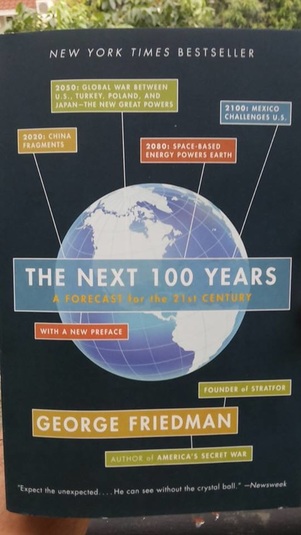 Bravo! Itulah komentar saya ketika akhirnya selesai membaca buku ini 3 minggu yang lalu. Walau mungkin saja ada beberapa ramalan di buku ini yang tidak akan terjadi, tapi dengan membaca keseluruhan buku ini, setidaknya saya mendapat bayangan, akan seperti apa dunia dalam 100 tahun mendatang secara teknologi, demografi, tatanan sosial, agama, konstelasi politik dan konflik internasional. Walaupun tidak menjadi bahasan utama dalam buku ini, akhirnya saya juga mendapatkan penjelasan kenapa seks bebas, perceraian, dan beberapa fenomena sosial menjadi semakin lazim saja di abad modern ini. Untuk memperkirakan keadaan dunia di masa depan, sang penulis yang merupakan seorang pakar geopolitik dan mantan staf senior CIA menggunakan geopolitik sebagai alat analisa utamanya dengan menjadikan keadaan dunia saat ini sebagai titik tolaknya. Penulis memulai dengan menganalisa keadaan demografi, ekonomi, ketersediaan SDA, kemajuan teknologi dan letak setiap negara yang ada di setiap kawasan -mulai dari Eropa, Timur Tengah, Asia Tengah, Asia Selatan, Asia Tenggara, Asia Timur, hingga benua Amerika- untuk melihat kepentingan dan konflik antar negara yang akan tercipta di tiap kawasan. Setelah dinamika setiap kawasan dapat dibaca, ia lantas memperkirakan bagaimana dinamika itu akan membentuk kekuatan tarik-menarik antara berbagai belahan dunia dan menciptakan konflik-konflik di Bumi dalam 100 tahun mendatang. Diantara beberapa hal yang ia ramalkan akan terjadi di dunia dalam 100 tahun mendatang secara berurutan adalah: 1. Perang antara AS dan kelompok Islam radikal. 2. Kemandekan ekonomi Cina dan kegagalannya untuk menjadi negara adidaya. 3. Perpecahan Russia. 4. Kemunculan 3 kekuatan adidaya baru yg akan menyaingi AS: Polandia, Jepang dan Turki yg akan berhasil mempersatukan sebagian besar dunia Islam. 5. Perang Dunia 3 antara 2 faksi: Polandia-AS vs. Jepang-Turki 6. Kemunculan sebuah adidaya baru pasca usainya PD-3 yang akan siap menghabisi AS: Mexico. Mengingat buku ini ditulis di tahun 2009 ketika ISIS belum muncul dan orang-orang sangat optimis dengan perkembangan ekonomi Cina, menarik untuk melihat bagaimana beberapa hal yg diramalkan buku ini sekarang mungkin sudah mulai terjadi: kemunculan sebuah kekuatan Islam radikal yg sangat berpengaruh dan merosotnya ekonomi Cina. Terlepas dari akan berhasil atau tidaknya sang pengarang memenuhi seluruh ramalannya, buku ini tetap akan menjadi bacaan yang menarik karena akan banyak mengajarkan kepada kita bagaimana kehidupan di dunia ini, dalam berbagai tingkat, amat sarat kepentingan, termasuk dalam hubungan antar negara. Harga: Rp.267 ribu Bisa dibeli di: Periplus Cerita orang Rohingya saat ini mirip dengan cerita orang Yahudi pada PD II. Karena dihabisi oleh Hitler di Eropa, orang Yahudi eksodus untuk mencari perlindungan di berbagai tempat di luar Eropa.
A. Introduction
In the Middle Ages, Muslims led an advanced civilisation. Muslim empires stretched wide from the Indian subcontinent to Spain and many scientific discoveries were made by Muslims. Muslims at that time viewed Europeans as pale-looking people who lived in the lands of winter, thus disabling them to have full intellectual capacity as human. However, the Modern Age sees a reversal in this position. Europeans are leaders in science and technology while many parts of the Muslim world are inflicted with ignorance, poverty, dictatorship, and religious extremism. What has happened to both worlds? How the transfer of power has occured from the Muslim to the European hands? Also what is the probable future for Muslims and Europeans? This article tries to discover the answers to the questions above which might eventually provide valuable lessons for Muslims. B. The Early Caliphates The history of Muslims began when Muhammad first preached Islam to the people of his birth city of Mecca. When he died in 632 AD, most of the Arabian peninsula has submitted to Islam. The political leadership of the Muslim community was then assumed by Muhammad’s close companions -Abu Bakr, Umar, Uthman, and Ali consecutively. These political leaders of the Muslim community are known as caliphs. The first four caliphs (also known as khulafa-ur-rashideen) launched massive military campaigns outside of Arabia to expand Muslim territory. Fueled by zeal under their new religion, Muslims succeeded in winning many territories from the Byzantine and Persian empire within a short time. However, attempts to overthrow the rule of the caliphs also started to appear. Umar was murdered by a rebel. Uthman, who succeeded him, was also murdered by rebels. Ali, Muhammad’s only son in law, then stepped into his position. By Ali’s time, Muawiyah, a relative of Uthman and the gouvernor of Syria, demanded that Ali should present the murderers of Uthman. Delivering unsatisfactory result, Ali was then challenged by Muawiyah. By this time, Muslims became divided into 3 factions: Those who supported Ali (known as the Shi’ites), those who supported Muawiyah, and those who denied both figures (known as the Kharijites). Ali was then assassinated by the Kharijites. Muawiyah took this opportunity to ascend to the seat of caliph. With a strong back up, Muawiyah succeeded in doing this. When Muawiyah began his rule in 660 AD, he inherited an already vast Islamic empire, stretching from the frontiers of India to North Africa. He then expanded and organised it. Later he designated his son, Yazid, to be his successor, thus establishing the dynastic caliphate for the first time in Muslim history, known as the Umayyad Caliphate. Umayyad caliphs implemented the policy of exterminating Ali’s blood lines in order to get rid of potential political rivals. They also established Arab hegemony over other ethnic groups who had been absorbed into the Muslim community following the caliphate’s expansion. These things have made the Umayyads despised by many parties. The Shi’ites, who had always been hunted by the Umayyads, supported the Abbas family, a political rival of the Umayyads. However, when the Abbas family succeeded in overthrowing the Umayyads and established the Abbasid caliphate in 750 AD, they turned to hunting down the Shi’ites whom they viewed as potential political rivals. Abdurrahman, an Umayyad prince who escaped the Abbasid massacre of his family, established a caliphate in Spain, which had previously been conquered under Umayyad’s rule. Rulers of North Africa also broke off from Abbasid’s rule and established the Fatimid caliphate. By the time of Abbasid’s rule, there were 3 contemporary empires in the Muslim world: the continued Umayyad caliphate in Spain, the Fatimid caliphate in North Africa, and the Abbasid caliphate in the rest of the Muslim world. The rule of these 3 caliphates saw the arrival of an era marked in history as the Golden Age of Muslim civilisation. Settling in strategic areas, supported by their now large population, the variety of commodities from different Muslim territories, and proper government policies, Muslims flourished in commerce. Muslims also flourished in science and technology. The vastness of Muslim caliphates, covering the whole or parts of areas of ancient civilisations, such as the Egyptian, Greek, Mesopotamian, and Indian, became a fertile ground for the discovery of ancient scientific works, their exchange, and the growth of new ideas. Muslim caliphs nurtured the culture of affection towards science in their empires by funding the translation of scientific works from ancient civilisations, mainly Greek, the construction of libraries, as well as astronomical observatories. While Muslims were in their Golden Age, the Europeans were in their Dark Age. The last advanced European civilisation, the Roman Empire split in 395 AD following the death of Emperor Theodosius I. While the Eastern Roman Empire, then known as the Byzantine Empire, continued to exist until 1453 AD, the Western Roman Empire collapsed in 476 AD after its emperor was killed by Odoacer, the chieftain of the German Gothic tribe. With this, Europe entered the Dark Age. With the absence of a single strong authority to unite and administer, Western Europe succumbed into feudalism. Feudalism is a system where lands are owned by landlords. Each lord raises his own armies and exercises justice in his own land. In return for the protection that they enjoy, common people work on the lands of these lords. The focus of feudalism was the welfare of the rulers, not the commoners, thus rendering difficulty to establish prosperity among the latter. With the absence of a single political ruler, the church also played a greater role along the Dark Age. It was the only institution that united most of Europeans. The circumstances of that era got the church to expand into the secular domain from being only in the religious one during the Roman time. The church possessed properties and its clerics enjoyed priviliges amidst society. European rulers and the Pope grew interest in each other at that time. The rulers viewed that the church had the ability to influence people to support them, while the Pope needed the rulers’ protection for the church properties from the often invading European barbarian tribes. Their relationship developed so close and intricate in the Dark Age –at times being harmonious and at other times containing enmity. There were times when a Pope excommunicated a ruler and a ruler detained a Pope. Centuries later, a prominent figure rose in Europe: Charlemagne. The king of the German Franks, he was able to subdue many lands, united them under his rule, and establish the Holy Roman Empire in 800 AD with its territory comprising modern France, Germany, northern Italy, and small areas in between. For the first time in the Dark Age, a large part of Western Europe was unified under a single administration. Over time European population grew and crowded the cities. However, due to the lack of sanitation in these cities, the outbreak of the Black Death plague from 1347 AD to 1351 AD claimed a high rate of death toll. Historians estimated that it reduced the European population by a fourth or a third. Some say, this has helped the collapse of feudalism in Europe as lords were in shortage of peasants to work on their lands besides other factors, such as the growing process of land unification under the emerging European centralised kingdoms. Aside of the Black Death, the 14th century also saw the success of commerce in Italian city states. Supported by the capital at hand, people there sought ways to carry their quality of life to a higher lever. Combined with the following factors particular to that time, it sparked the Renaissance in Europe.
Those factors above have introduced the Europeans to new techniques and the rediscovery of their rich Greek and Roman past. Beginning first in Italy, the Renaissance spread to other parts of Europe as the Black Death faded away, as English saying puts it “A rising tide lifts all boats”. Characteristics of the Renaissance were pride of Greek and Roman cultural works, appreciation of arts, sophistication of court etiquettes, interest in science, and the rise of humanism. The Renaissance has made Europe leave the Dark Age and enter a new era. While European nations showed signs of awakening in the 14th century, two centuries earlier the Muslim civilisation began to regress. The last periods of the caliphates witnessed fierce internal political conflicts weakening the governments and ceasing the growth that Muslim civilisation had already acquired. In the Abbasid caliphate the sultans eventually became puppet figures controlled by the powerful Seljuk Turks who had been serving in the military, while in Muslim Spain the now disintegrated Muslim power crumbled in front of the unified force of the Christian kingdoms pursuing the Reconquista, a process to recapture whole of Spain and Portugal from Muslim rule. When the large wave of Mongol invasion swept across Asia and Eastern Europe in the 13th century, the Abbasid caliphate was in a weak condition. After the Mongols arrived at the gates of Baghdad –the capital of the Abbasids-, destroyed the city and killed the sultan in 1258 AD, Abbasid’s rule was effectively ended. Territories once unified under Abbasid’s administration broke apart and formed a multitude of independent emirates. The collapse of political unity in the Muslim world came along with the cease of scientific development by the Muslims. The long debate between Muslim philosophers and Muslim clerics about whether truth could be discovered through ratio alone was eventually won by the cleric side, resembled by the publication of the book Tahafut Al-Falasifah (The Confusion of the Philosophers) by the influential Muslim cleric Al-Ghazali. When the Europeans invented the printing machine, Muslim clerics objected to its use in the Muslim world until 3 centuries later, fearing that self study of religious books could lead to heresy. This setback experienced by the Muslims continued up to the 15th century until Muslim powers rebuilt themselves upon the remnants of the former emirates in the forms of Ottoman, Safavid, and Mughal Empire. C. The Ottoman, Safavid, and Mughal Empire The Ottoman, Safavid, and Mughal Empire were strong empires forged with new administration and military power. Once appearing in Anatolia in 1299 AD, the Ottoman Empire conquered the Balkan, Constantinople in 1453 AD, reclaimed the Middle East and North Africa, until it arrived at the gates of Vienna in 1529 AD. It reached its zenith under Süleyman the Magnificent who reigned from 1520 AD to 1566 AD, turning the Ottoman Empire to a great adversary to Europe. The Mughal empire was built upon the remnant of the Delhi sultanate, comprising modern Afghanistan, Pakistan, India, and Bangladesh. It reached its zenith under Aurangzeb who reigned from 1658 AD to 1707 AD. In between was the Safavid empire which was the Shi’ites’ sole stronghold. In their glorious days, those empires competed with each other in territorial expansion, commerce, and construction of monumental buildings. They left us the Süleyman mosque in Istanbul, the vast Isfahan square in Iran, and the Taj Mahal in India. Although Muslims ascended again into supremacy, they never reassumed their former position in the development of science and technology. This was probably nurtured by the sultans whose emphasis were rather on commercial and military growth. From the 17th century this vacuum position would be filled by the Europeans. The 15th and 16th century also witnessed 2 important phenomena in the Muslim world. Islam which had been carried to Southeast Asia through commerce gave way to the emergence of local Muslim sultanates. In Indonesia, the sultanate of Demak conquered the last Hindu kingdom of Majapahit in 1527 AD, thus ending the centuries long Hindu-Buddhist era there. In 1493 AD Granada –the last Muslim emirate in Spain- collapsed in front of the advancing Christian armies. The Reconquista was accomplished and the Catholic Spanish Empire was established. Following Ottoman conquest of Constantinople, the Ottomans became intermediaries in the trade between the West and the East which propelled the prices of commodities. This incited Italian, Spanish, and Portuguese figures, such as Bartholomeu Dias, Vasco Da Gama and Christopher Colombus, to seek new ways to reach Asia by circumventing the African continent or sailing to the West. This brought Europe to the Age of Exploration. Despite being unable to find a shortcut to Asia, Christopher Colombus found the American continent instead, later titled as the New World. The Spanish empire which had sponsored Colombus’ journey began military campaigns to colonialise parts of the continent and exploit its riches. Later, other European nations, such as the Netherlands, the United Kingdom, and France, stepped into the exploration race by sailing to the other parts of the world. Whenever they encountered the technologically more inferior natives –including distant Muslims who were not under Ottoman, Safavid, nor Mughal rule, such as ones in Southeast Asia-, the European nations would colonialise them and take benefit from them. Upon the riches gathered from the colonies, European kingdoms could build their power. During the 16th century an important change took place in the religious atmosphere of Europe. Previously in the Dark Age the church had become so intertwined with politics. To the end of the Dark Age, as role of kings grew greater, the kings tried to marginalise the role of the church which they see would intervene with their authority –a process known as political secularisation. Later the abuse and corruption in the church became so apparent that they drew criticisms from many people –one influential figure was Martin Luther, a Catholic cleric. In 1517 AD he published the Ninety-five Theses which criticised some practices of the Catholic church. Luther ended up being ex-communicated by the church. His movement which started as criticism developed into a new branch of Christianity with some different views in theological and practical aspects, known as Protestantism. With the availability of printing machine, Luther’s idea spread and influenced nations of Europe. Nations began taking side with Catholicism or Protestantism, ending in the fierce 30 Years’ Wars from 1618 AD to 1648 AD. The emergence of Protestantism has further weakened the dominance of the Catholic church. Started in the 17th century, important scientific discoveries were made in Europe. Isaac Newton proposed the Laws of Motion and Gravitation and Galileo Galilei proposed the Laws of Falling Bodies. Europe then became a fertile ground for the birth of scientists, in shortage in the Muslim world. Following this, rationalist philosophers ignited the Rationalism movement which had a profound effect in Europe. They questioned the validity of religious explanations of natural phenomena in the wake of scientific methods implemented by Newton and Galilei. They then developed into questioning the validity of religion. This has begun the Age of Reason in Europe, which made the church not only marginalised from European politics but also from European minds. I call this phenomenon as mental secularisation. With mental secularisation, religion became a personal affair. Individuals were either free to follow, not to follow, or deny any religion at all. As a result, practices such as free sex, homosexual marriage, and a rising number of divorces began to emerge in the West–all of which many from the Eastern world would see as moral decadencies. In the Age of Reason, a fundamental change also took place in the European governments. Until that time, most of European governments were in the form of monarchies. In this type of government, aristocratic interests prevail over the will of the common people. The first often went against the latter at the expense of the latter. Spurred by the injustice that they experienced, civilians in different European states staged demonstrations, demanding for changes. Such actions resulted in the issue of the Bills of Rights in the United Kingdom in 1689 AD, which limited the rights of the British monarchs, and the French Revolution from 1789-1799, which deposed the French king. Later by the 20th century, nearly all governments in Europe have been constitutionalised or republicised, following the model that political philosophers such as Montesquieu had proposed. From this, we can observe that the form of European governments has developed over time from Empire (the Roman Empire) to Feudalism to Monarchy to Constitutional Monarchy or Republic. The 18th century saw another important European invention which changed the face of the continent: the steam engine of James Watt. The steam engine enabled the establishment of factories which in turn enabled the production of goods in a large number, shorter time, and the same quality. This made the prices of goods lower, so they became accessible to the Middle and Lower Class. Steam engine has also moved a large number of people from the rural to the urban areas to work in factories, thus causing some European nations to develop from agricultural societies to industrial ones. Steam engine has enabled the creation of railways and steam ships as well, which have reduced travel time significantly and connected many places closer than before. This period of significant changes in Europe is known as the Industrial Revolution. When European nations achieved the Industrial Revolution, they have eclipsed Muslim empires which had been lacking of innovations since the 15th century. It became apparent that in clashes between European and Muslim powers over territorial disputes, Muslims now lost more often than the Europeans. The sultans of the Ottoman and Safavid Empire realised this dismal situation and began reforms in the empires’ administration and military. In the Ottoman Empire, these reforms were known as Tanzimat. However, these reforms did not succeed in saving the empires from the European powers whose grounds had become the birth place for a series of inventions started centuries earlier. The British Empire succesfully supplanted the Mughal Empire in the mid 1800’s by deposing its last sultan, Bahadur Shah II. The Ottoman Empire made it into the 20th century. However, because the Ottomans sided with Germany in World War I, they had to accept the consequences for the losing side of the war. Ottoman territories were eventually divided into modern Morocco, Algeria, Tunisia, Libya, Eypt, Saudi Arabia, Palestine, Jordan, former states of Yugoslavia, and Turkey, where the capital of the empire was seated. Except Turkey, each of these territories was then colonialised by the Allied Powers. The Safavid Empire survived. However the Safavid dynasty was replaced by a dynasty that became puppets of European powers. With the collapse of the Ottoman and Mughal empire, colonialisation of most parts of the Muslim World by the Europeans was complete. Muslims suffered under European imperialism. Their natural resources were exploited, they could not achieve prosperity, and they were kept away from education. Some Muslim nations experienced this for a couple of years, others experienced it for hundreds of years since their first contact with the Europeans, such as Indonesians. Such colonialisation effectively made Muslims ignorant, poor, and had no experience in administering a government. Conditions only changed when European powers succumbed into the World War II. Exhausted with the war against themselves, Europeans were met with Muslim revolts demanding independence in their own lands. Now almost 7 decades have passed since World War II ended and Muslims could liberate themselves from European rules. However we could witness Muslim nations in different conditions now. Palestinians lost their homeland to the Zionists under American support. The newly established governments in Iraq and Afghanistan are still retrying to unite the different political factions and stop suicide bombings, after their former governments were overthrown by the United States. Most of the Middle East is trying to overthrow their authoritarian governments. Pakistan is struggling to fight internal religious extremism, build its economy and military. Iran is developing its nuclear technology, finding resistance from the Western countries. Indonesia is fighting internal bureaucratic corruptions and building its economy, while Malaysia and Turkey are leading with their economic growth. In general, Muslims are still lagging behind the European nations in terms of economical and technological achievement. It can be proved from the following figures as per May 2012:
D. Conclusions Dealing with the dismal condition of the current Muslim world, many Muslims try to sooth themselves by reminiscing about their old glorious days. This is good to remind us of what we are actually capable of and the dignity that we should always have. However doing only this will not return us to world supremacy. We must also seriously learn, why we have declined and why Europeans have arisen. For myself, the Muslim world declined because it was eventually inflicted with too many internal conflicts and lacking of innovations. On the other hand, Westerners have succeeded in making their grounds fertile for the birth of ideas and inventions. I have come across Muslims who undermine Western achievements in science by saying that they are merely copies of Muslim discoveries in the Middle Ages. These are just comments from people who never learn history. The West did learn from the Muslims in the beginning, but later they made original discoveries. Things, such as the Laws of Thermodynamics and Theory of Relativity, are new Western discoveries which were not yet found during the Golden Age of Muslim civilisation. Anyway, any civilisation should always copy and study things from the more advanced ones, before they could make original contributions. So, the West did not do anything wrong in this case. To surpass Western achievements, the key lies at the quality of our human resources. Several nations of the world that had been lagging behind the West eventually succeeded in making themselves equal to the West by improving the quality of their human resources. Japan and Singapore are examples of this. Muslims must really learn how these nations built themselves. Educating an entire nation requires certainly a lot of fund. Therefore Muslim countries must improve their economy first. The prerequisite for economical improvement itself is having a government that really pays attention to the welfare of its people. We can hardly achieve this with authoritarian regimes. Sometimes an authoritarian regime does look after their people, but sometimes they just look after themselves. As an English saying puts it: Power tends to corrupt. Muslims must ensure that their government executives are well supervised. Dictatorship as what we witness in some Middle Eastern countries cannot be let go. Amidst modern Muslims’ urgent need to learn, it’s really sad to see that some Muslims still and only identify the West with infidelity. This creates the tendency to deny just everything coming from the West. We must not forget what our parents teach us: We must learn the good things from everyone and foresake the bad things behind. For myself, the fervour to surpass the Westerners must not develop into hatred towards them, yet it must be paralleled by an adept proficiency at their languages, at studying the knowledge that they now possess, so that we can develop it later. Muslims of the Golden Age of Muslim civilisation had studied extensively the works of ancient scientists of different beliefs prior to developing their own and finally becoming prominent in the field of science and technology. So, such attitudes, where some Muslims label other people and refuse to learn from them, are a direct betrayal to the explorative spirit that Muslim forefathers displayed. Changes happen everyday and can alter the course of human history. Europeans themselves now show some signals that could be interpreted as an emerging instability on their part. Due to their low birth rate, now Europeans have more ageing population needing government benefits than the young productive population able to provide support. This condition is very likely to continue. To deal with this shortage, European countries welcome foreign workers, including Muslims, to run their businesses. With this, a change in the cultural face of Europe is inevitable. Muslims must take this opportunity to prove that they are competent, able to adapt and contribute positively to the European society –things which are still missing from many European Muslim immigrants due to their educational background. Without the presence of foreign workers, European businesses risk diminution. Some European countries also show some signals of incompetitiveness in the face of new economic powerhouses, such as Korea and China. The more new economic powers play on the stage, the more risk European nations have from being shifted from the economic hegemony. If the Europeans are driven away, they could turn over time into mediocre nations running behind the new front runners. The entire world’s view would then turn to these new leaders as the new bearers of the torch of civilisation. The changes taking place in the world in a secondly rate produce a shift in the balance of powers. Only those who could adapt to these changes would remain in the prominent place. Muslims could be or not be a part in this shift of balance. There is no one telling us that we could not rise again. But likewise, there is no one telling us that we could rise again. Our success in restoring our glory is then determined by several things: whether we are willing to admit our current defeat, learn from the best, and exert all the efforts necessary to take us to our former place. In the first place, it is not a struggle on a global scale, but on a smaller scale in every Muslim family. Peradaban naik dan turun. Sama seperti apa yang pernah menimpa Peradaban Muslim yang mencapai puncak kejayaannya di Abad Pertengahan, Eropa Modern juga ditengarai mulai menunjukan tanda-tanda kemerosotan.
A. Understanding the Spanish Context Recently I have just read an Indonesian book titled “Islam di Spanyol” (Islam in Spain) written by my old friend, Ryan Mayer. The topic of Muslim civilisation in Spain becomes familiar to me again as it was when I was fascinated by the remarkable achievements of medieval Muslim civilisation in junior high school. I’m interested in writing this short article since I see that although Ryan described extensively about the political dynamics in Islamic Spain in his book, he did not make a conclusion of why Muslim civilisation in Spain eventually collapsed. Moreover, books that focus on the demise of Muslim Spain are indeed quite difficult to find in the market. I myself believe that in the collapse of Muslim civilisation in Spain, there are valuable lessons for every Muslim. Anybody having attention to Muslim history most probably would know that Islam was present in Spain for 900 years long, started with the arrival of Muslim conquerors in 711 AD and ended with the expulsion of the Moriscos (Muslims converting to Christians) in 1609 AD. While Europe fell into the Dark Age, marked by the absolute power of the church, the slowdown of intellectual and cultural growth, and the lack of good sanitation afflicting European cities, culture thrived in Muslim Spain. Streets were paved and lit with lanterns along the way. Public baths, hospitals, schools, universities, libraries, palaces and mosques were built everywhere in Spanish lands under Muslim rule. Muslims did not come to Spain on their own initiative. Rather, they were first invited by Julian, a Vandal lord, who despised the reign of Roderick, a Visigothic lord, who ruled most of pre-Islamic Spain. Rumors had it that Julian’s daughter had been raped by Roderick. However, if we take a look at present Spain, there is only a few, if not none, that could hint at Islam being a living integral part of Spanish culture. The myriads of mosques once to be found on Spanish soils have been turned to other functions. Muslims also number only a few in modern Spanish population. Out of 40 million residents in Spain, Muslims only number 1 million, of which native Spaniards are only between 20.000 and 50.000 people. These things seem to contradict Muslim presence in the Iberian peninsula for nearly a millennium. So, what has brought collapse to Muslim civilisation in Spain? Also, what has made its perishing so successful? B. Causes of Collapse and Vanishing Before we answer the aforementioned questions, I take you to have a look at Spain’s geographical situation first. Spain has always been located on the tip of Christian-dominated Europe, a continent separated by sea from the Muslim-dominated North Africa, the Middle East, and northern South Asia –a continuum from West to East. It can be understood by itself that the presence of any foreign element on the fringe of Europe, moreover Islam, will be subject to constant pressure from the region’s Christian powers. Thus if any Muslim rule was about to establish itself in Spain permanently, it must make sure that it should always remain strong to repel the region’s battering Christian forces. Also, given Spain’s geographical situation, not all Islamic empires could reach Muslim Spain. The nearest back up was the Muslims in North Africa who were still separated by sea. The never-ending presence of a strong support would have been required to ensure the everlasting presence of Muslim civilisation in Spain. This support would assist Spanish Muslims should they fall under heavy siege from the enemies. When Muslim Spain collapsed, all those requirements were no more fulfilled. There are 4 factors that I view contributing to the demise of Muslim Spain: 1. Consolidation of Spanish Christian Kingdoms When Muslims first entered Spain, spanish christian kingdoms were weak. They fought each other for supremacy over Spain. Therefore Muslims could conquer Spain rather easily and enjoyed a period of peace during their early residence in Spain, in spite of internal conflicts in Muslim community itself. Although later they still fought each other, spanish christian kingdoms began to consolidate over time. One way is by doing royal marriages. A well known marriage is between king Ferdinand II of Aragon and queen Isabella I of Castile who brought end to the last Muslim government in Spain -the Emirate of Granada- in 1492 AD. 2. Conflicts Within Muslim Community Since its first establishment in Spain, Muslim community had been a tapestry of different ethnic groups, which unfortunately turned out to become the source of conflicts along Muslim history in Spain. In Muslim Spain, there were Berbers, North African Muslims who made up the majority of the soldiers in the conquest of Spain. Due to their participation, they claimed for rule in the conquered Spanish lands. There were also Muladis, Spaniards who converted to Islam or married with Berbers or Arabs. They did not only consist of common people, but also Spanish noblemen. Spanish noble muladi families were such as Banu Angelino, Banu Sabarico, Banu Qasi, and Banu Qabturno. They were the majority in the population of the occupied Spanish lands. They viewed that they deserved the rule of Spain, since Spanish soils were actually theirs. There were also Arabs, who despite being a minority were an elite ruling class. They were often despised by the other groups for allegedly regarding themselves superior and trying to retain the rule of Muslim Spain with themselves. Under Arabs-led governments, the Berbers and Muladis became second class citizens. Although Spanish Muslim civilisation produced remarkable achievements on one hand, it was often coloured by this kind of ethnic disputes on the other hand. When one family from a group rose to power, the other families would challenge them. Several solutions had been attempted, such as alternate leadership for a limited period of time by different families. However, not all families turned out to abide by this agreement. Until the end of Muslim history in Spain, leaders election and leadership succession were still problems in the Muslim community. Democracy, whereby leaders were appointed by means of popular vote, was still an unknown concept at that time. The diverse Spanish Muslim groups could only be united when a strong foreign Muslim power, such as the Umayyad, the Almoravid, or the Almohad dynasty, came to conquer and seized rule from everyone. When this foreign power disappeared, Spanish Muslims fell back into conflicts. 3. Conflicts Among Spanish Muslim Governments Probably deceived by the peace they enjoyed, the Muslim governments, appearing in forms of taifas, forgot that they actually had common foes -the Christian kingdoms in the North- which would expand and reclaim their territories whenever possible. Muslim governments also did not regard that they stood on an equal ground and focus on working for the prosperity of their people -All of which could have led to the establishment of a Muslim confederation. Instead, each tried to be the most prominent in the region by carrying out monumental construction projects and overrunning the other Muslim governments, often by asking for assistance from the Christian kingdoms. Again, these disgraceful acts perished only when a unified government run by a foreign Muslim power took place. 4. Disappearance of A Strong Supporting Power From point 2 and 3 we know that the presence of a strong foreign power was always required to establish unity within the Muslim community and the different political factions in Spain. Even if the local Spanish Muslim governments had united, this strong foreign power would have been needed to provide a support when advancing enemy forces came to their gate. Unfortunately the last foreign dynasty to rule Muslim Spain, the Almohad, fell in 1269 AD with the assassination of its leader, Idris II Al-Wathiq. After that, the Reconquista, a process of reclaiming Spanish lands by the Christian kingdoms from Muslim rule that had started centuries earlier, went unstoppable. After the Emirate of Granada succumbed to the might of the allied Christian kingdoms, the fate of Spanish Muslims were left to the Christian hands. Almohad’s replacing dynasty in North Africa, the Merenid, did not have enough power to recapture the entire Spain from the Christian kingdoms, which were already strong at that time. Reinforcements from distant Muslim empires, such as the Ottoman Empire, could only launch assaults to Spanish coastal areas too. They could not go so far into Spanish heartlands. The fall of Muslim rule in Spain was eventually sealed.
If a civilisation falls, does it necessarily mean that all of its traces vanish? No. So why do traces of Muslim civilisation in Spain perish? The answers to this are provided in the 2 points below. 1. Rare Presence of Natives-run Muslim Governments Although the Muladis represented the largest populace in Muslim Spain, Muslim governments were not headed by them. This is due to the fact that the first Muslim government was established by foreigners who conquered Spanish soils: the Arabs and Berbers. As a consequence, the Arabs and Berbers regarded that they deserved the prize of this conquest: rule over Spain. The Muladis were only able to rule when they succeeded in their coup d’etats against the ruling parties, such as in the case of Banu Qasi that seized rule of Upper Ebro region. However, Muslim governments headed by Muladis was not a wide spread phenomenon. Even if it is often said that Muslims of different ethnic backgrounds intermarried in Muslim Spain, it seems that it did not go in such a rate that could totally blur ethnic distinction in the Muslim community. Some people still thought that they deserved rule of the occupied territories more than the others due to their ethnicity. This type of government, run for Muladis by non-Muladis, rather than for Muladis by Muladis, is what I suppose has made Spanish Muslim governments viewed by Spaniards of that time as being colonialistic and alien to some degree, because their relative Muladis could not be masters in their own homeland. Acts to eliminate everything foreign could appear in every nation of this world, whenever an anti-foreigner sentiment erupts amidst the community. 2. Eradication by Spanish Monarchs When the Emirate of Granada was defeteated in 1492 AD, its leader, Muhammad XII alias Abu Abdillah secured an agreement, The Treaty of Granada, with King Ferdinand II and Queen Isabella of Castile to protect the religious freedom of the Muslims now living under Christian rule, known as Mudejars. However this agreement was short lived. Soon Cardinal Cisneros burned Arabic books and forced Muslims to convert to Christianity, which caused the First Rebellion of Alpujarras in 1499 AD. In 1502 AD, Queen Isabella I officially asked all Muslims in the kingdom of Castile to convert to Christianity or exile. King Charles V took the same act to Muslims in the kingdom of Aragon in 1526 AD. While some Muslims exiled, many chose to convert to Christianity. They were known as Moriscos. However, they were often subject to suspicion from their fellow Christians for practicing Islam in secret. This was probably influenced by the issue of some fatwas, such as that from the Grand Mufti of Oran in 1504 AD, that explained that Muslims were allowed to eat pork, drink wine, or do other forbidden things to hide their true identity (known as taqiyya) in the face of imminent threat. Many Moriscos then became targets for Inquisition, a Christian trial to investigate the actual religious practices of the suspected Christians. Its punishments range from imprisonment, torture, to burning at the stake, known as auto da fe. Despite being Christians, many Moriscos still used Arabic language, dress and performed Arabic customs. To assimilate the Moriscos better into the Spanish Christian society, in 1567 AD King Phillip II of Spain reasserted the prohibition for practice of Islam and forbade the use of Arabic language, names, dress, customs, as well as instructed the surrender of Morisco children to be educated by Christian priests. Some Moriscos who were indeed secret Muslims carried out the Second Rebellion of Alpujarras and the Morisco Revolt in 1568. Following these, King Phillip III of Spain issued the Edict of Expulsion in 1609 AD to finally expel all Moriscos from the kingdom of Spain while confiscating their properties. This closed the presence of significant Muslim population in Spain. Struggling with Muslims in their homeland along the course of their history, the Spaniards were the only Western nation not to participate in the Crusades launched to seize Jerusalem from Muslim hands. C. Conclusion I know that many modern Muslims dream to be united under a single caliphate as they were in the past. However, the more I learn about Muslim history, the better I understand that the only Muslim caliphates free of any profane contaminations were the first four Muslim caliphates, run by the fellows and direct students of Prophet Muhammad himself. Since the last caliphate was brought down by a coup d’etat, the following caliphates fell victim to greed, political intrigues, ethnic discrimination, and corruption despite their great accomplishments. These were also the diseases that have eventually torn down Muslim civilisation in Spain. Finally, I believe, it is not unity under a single caliphate per se that would restore Muslims to world domination again as in the Middle Age, but values like hard work, fairness, ethnic equality, democracy, education, and good morality –some of which had been prescribed by the Prophet himself in his Last Sermon before he died. |
TOPICS
All
MONTHS
December 2019
|
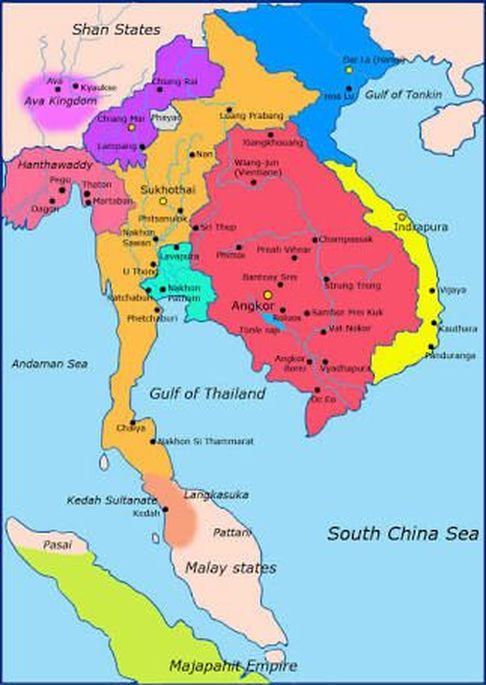
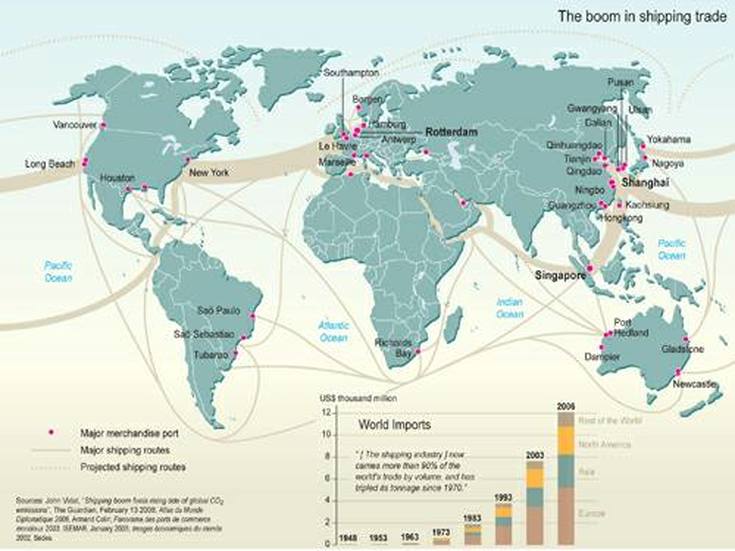
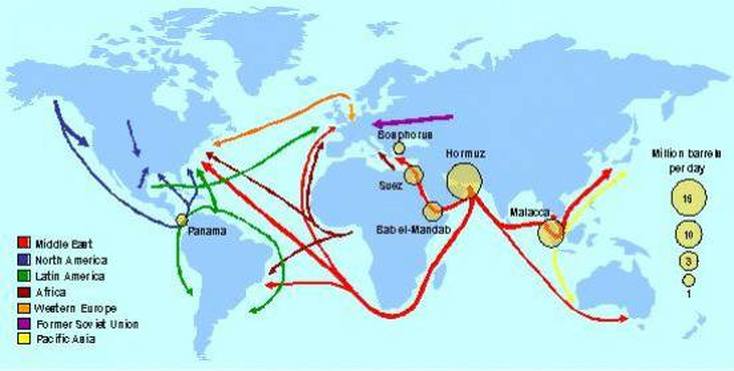
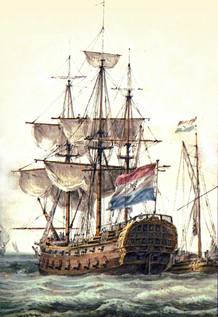
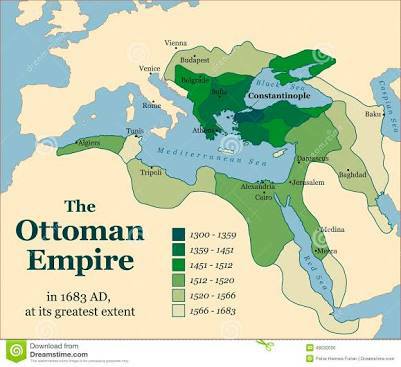
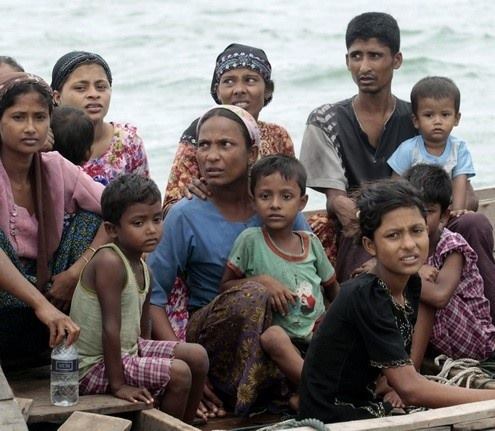
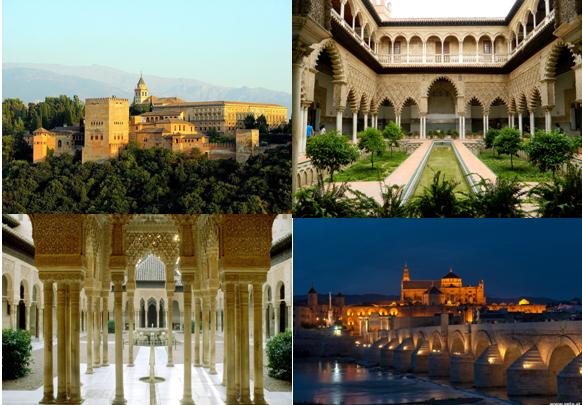
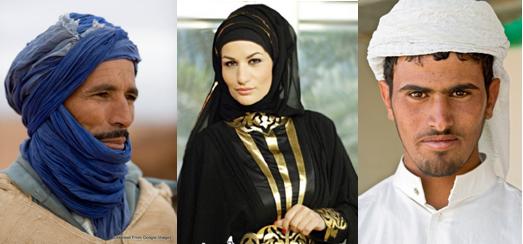
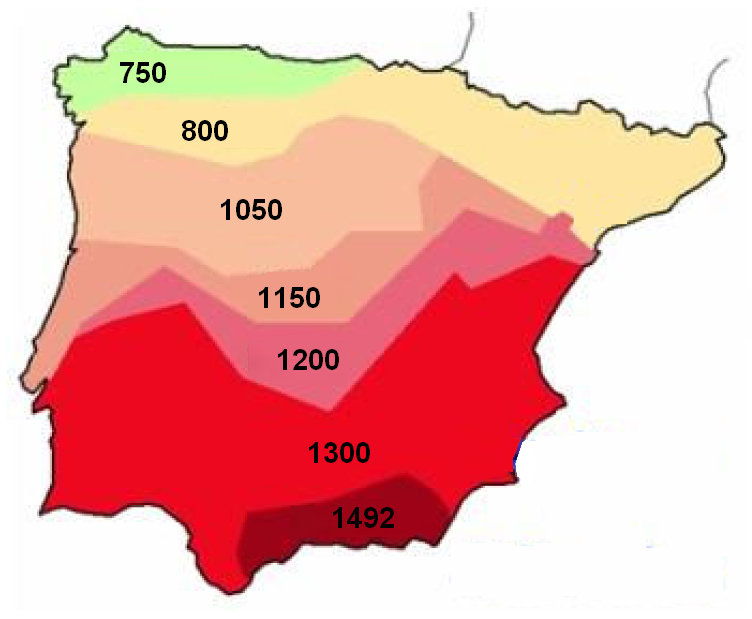
 RSS Feed
RSS Feed